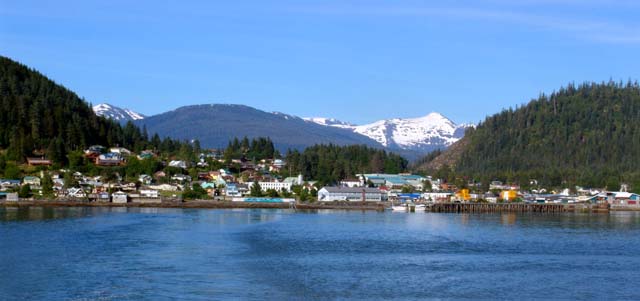
Through the Wrangell Narrows to Petersburg
June 17-18, 2004
Ferry Loading Observations - Part II: Earlier I commented on the interesting scheduling problem posed by the fact that the the Alaska ferries go to several destinations before turning around. It seems the Alaska ferry system does not always have the correct solution - in plain English,. they sometimes screw up. We were scheduled to leave Wrangell at 5:30 p.m. on the Malaspina. The ferry arrived about 15 minutes late and unloaded those vehicles getting off at Wrangell. A few people going on to a later destination had to drive their vehicles off so that some vehicles behind them on the ferry could be unloaded. But the major screw-up was yet to come. When they were down to about five vehicles and one large semi waiting to be loaded, they put the semi on. The tractor part of the semi then came off and left, leaving the trailer on the ferry. At that point there were about five cars and RVs waiting to load, including us. One of the ferry workers then told us that it didn't look like there was enough space for all the remaining vehicles; some of us might be left behind. Then we overheard on the ferry worker's walkie-talkie that the trailer was too high and prevented the car deck doors from closing. They had to locate the truck driver and have him come back to take the trailer off. Fortunately they located him and he showed up in about 15 minutes and removed the trailer. That also helped us, because it opened up enough space for the rest of remaining vehicles, including us. But all this took time and we were an hour and five minutes late in leaving Wrangell. This ferry was scheduled to pass through the Wrangell narrows and stop at Petersburg (our destination), and then go on to Sitka, passing through the Peril Strait on the way there. Hitting the Peril Strait at the right time relative to the tides was crucial, or they would have to wait for the tide to come back in. We don't know if they made it or not, but they shortened the stop in Petersburg as much as possible to make up some of the lost time. One of the ferry workers told us that the person in charge of the car deck will surely be "talked to" by the captain about this screw-up.

View of Wrangell as we left on the ferry. We enjoyed our stop at Wrangell very
much.
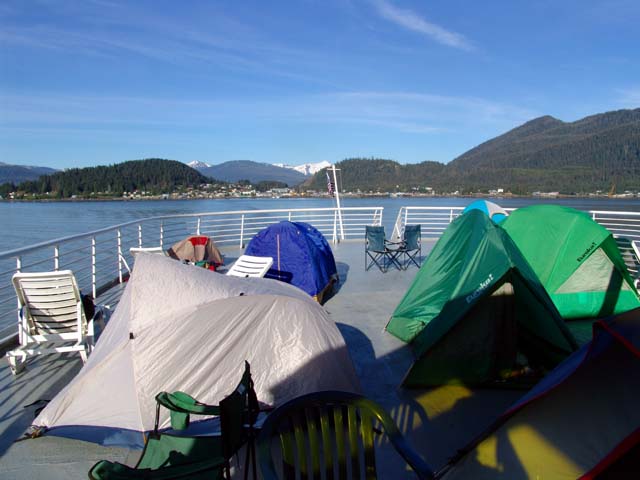
Tents on the top deck of our ferry, the Malaspina. They belong to
passengers who want to lay down to sleep, have some privacy, and don't want to
pay for a stateroom; I suspect they are also about 40 years younger than us.
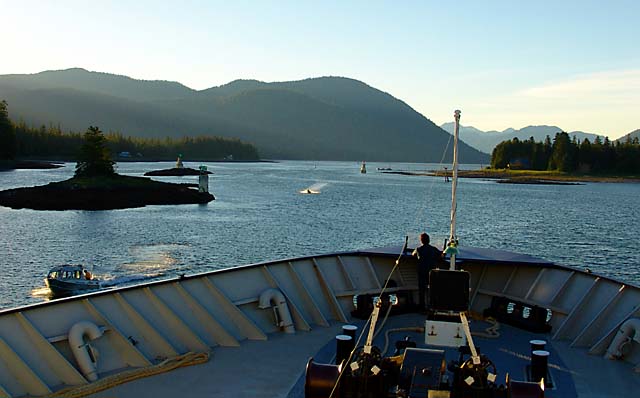
The Wrangell Narrows are one of the more challenging navigational hazards facing ferry captains. The Narrows are about 20 miles long and average about half mile in width, but the channel is only 300 feet wide at the narrowest point. Our ferry was 400 feet long and 85 feet wide, so there is not a lot of room for error. The channel is marked by green markers on one side and red on the other side. Ferries pass through even in the fog. Every few years someone screws up and a ferry goes aground or hits something.
The Narrows are not very deep - 19 feet at low tide at the shallowest point. Our ferry requires 16 feet of water to float; low tide occurred during our passage, so we were pretty close to the bottom at points.
The guy in the bow serves as a lookout, and is there only when
the ship is in the Narrows. If we are in danger of hitting something he drops
the emergency anchor and rings the bell. At this point several small boats are
in our path. When they are too close, the pilot blasts his horn, but doesn't
change speed or deviate from the channel. It is up to the small boats to get out
of the way.
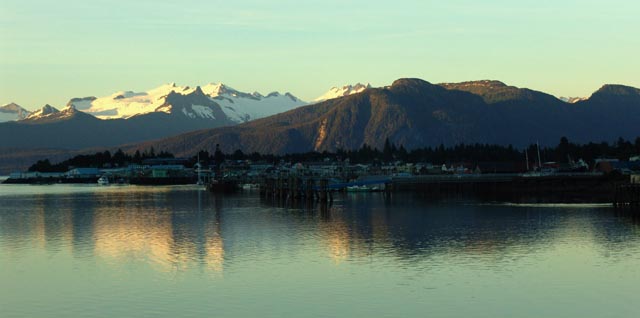
As sundown approached, we arrived at Petersburg, which is at the
north end of the Wrangell Narrows. It is named after a Norwegian, Peter
Buschmann, who founded the place when he put a fish cannery here in 1897. He saw
commercial possibilities for the location: the area had good fishing, and the
LeConte glacier nearby would provide ice for shipping the fish to Seattle. The
town still has a Norwegian flavor, and is a major fishing center. Only small
cruise ships come here since the big ones are too large to navigate the Wrangell
Narrows; consequently there is not a lot of tourism.
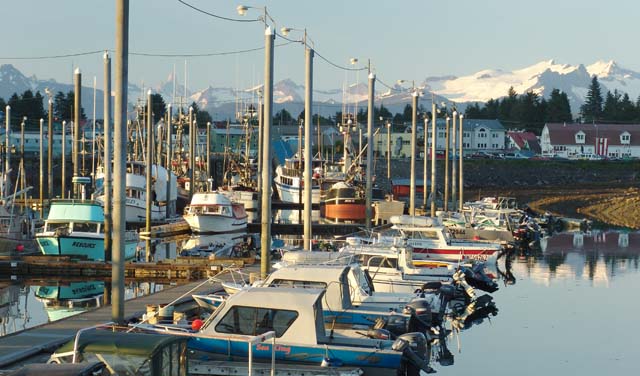
Petersburg has a large fishing fleet. The coastal range on the
other side of Frederick Sound makes a beautiful backdrop for the town.

We toured a small fish processing plant (Tonka Seafood) that
specialized in gourmet salmon; they primarily provide salmon for cruise ships,
restaurants, and canned salmon for gift shops. One of the owners said that you
won't find their products in grocery stores. He is showing us a chinook salmon,
also called king salmon. After the tour we had the opportunity to sample some of
their smoked salmon; it was very good.
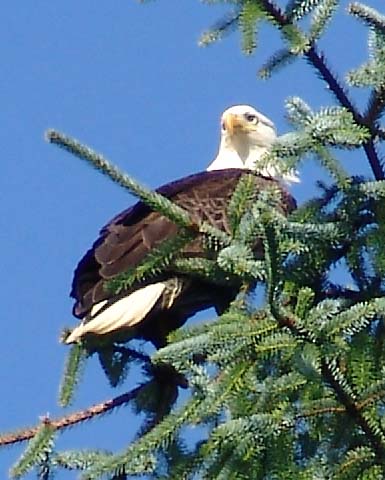
Our overnight ferry to Juneau didn't leave until 1 A.M. so we
spent the late afternoon and early evening hours in a local park, appropriately
named Eagle's Roost. Several eagles used the trees in the park to keep their eye
on dinner possibilities in the Wrangell Narrows. The park is adjacent to a large
fish processing plant. The plant discharges waste fish products into the Narrows
water; this attracts herring, which then attracts eagles.
Next stop is Juneau; we will be there only one day and then go to Sitka.